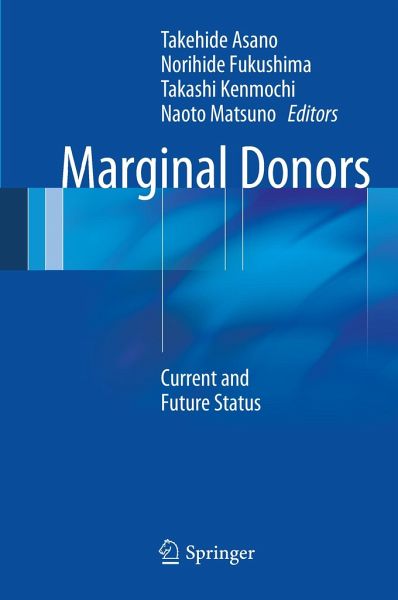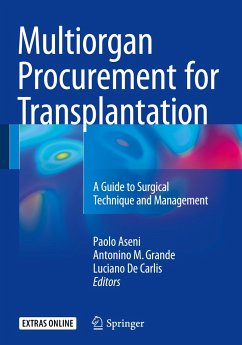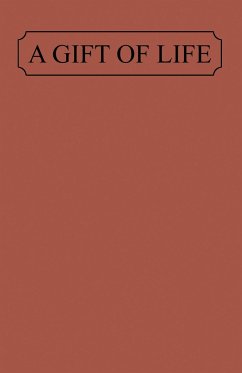
Marginal Donors
Current and Future Status
Herausgegeben: Asano, Takehide; Fukushima, Norihide; Kenmochi, Takashi; Matsuno, Naoto

PAYBACK Punkte
38 °P sammeln!
In response to persistent donor organ shortages, organs from marginal donors, such as expanded criteria donors (ECD) and donation after cardiac death (DCD) donors, are now accepted and have been successfully transplanted, reducing the waiting times for transplantation. Especially in Japan, transplantation of DCD kidneys has a relatively long history because of the difficulty or lack of national consensus in accepting brain death, which has made it possible to accumulate considerable clinical experience. Thus, the current organ shortage has stimulated interest in the use of marginal donors for ...
In response to persistent donor organ shortages, organs from marginal donors, such as expanded criteria donors (ECD) and donation after cardiac death (DCD) donors, are now accepted and have been successfully transplanted, reducing the waiting times for transplantation. Especially in Japan, transplantation of DCD kidneys has a relatively long history because of the difficulty or lack of national consensus in accepting brain death, which has made it possible to accumulate considerable clinical experience. Thus, the current organ shortage has stimulated interest in the use of marginal donors for transplantation. On the other hand, however, it is known that these organs have a high rate of delayed graft function and a more complicated postoperative course. These drawbacks have created the greatest clinical challenge in transplantation to date because of the current shortage and limitations of donors using ECD and DCD.
This book, prepared by distinguished authorities in their fields, is intended for clinicians and researchers. It highlights the use of marginal donors as a comparatively novel source of transplantation organs and provides a thorough overview of marginal donors from their historical origins to recent clinical applications, including the state-of-the-art science of organ/donor management, procurement, and preservation. Also provided is valuable information on ABO-incompatible donors which extend the availability of donor sources. Each chapter offers an individual analysis of the optimal requirements for the safe management and preservation of organs, including the heart, lung, liver, kidney, pancreas, and pancreatic islets.
This book, prepared by distinguished authorities in their fields, is intended for clinicians and researchers. It highlights the use of marginal donors as a comparatively novel source of transplantation organs and provides a thorough overview of marginal donors from their historical origins to recent clinical applications, including the state-of-the-art science of organ/donor management, procurement, and preservation. Also provided is valuable information on ABO-incompatible donors which extend the availability of donor sources. Each chapter offers an individual analysis of the optimal requirements for the safe management and preservation of organs, including the heart, lung, liver, kidney, pancreas, and pancreatic islets.














